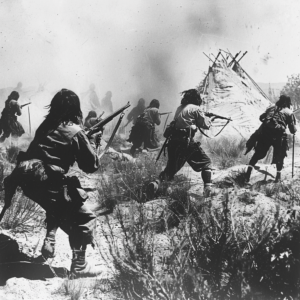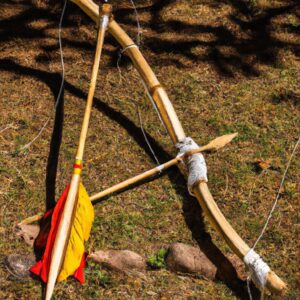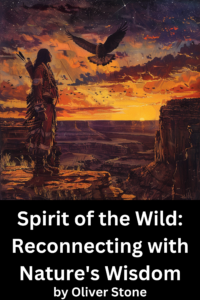Apache Tracking Skills How to Navigate and Hunt in the Wilderness
Introduction
In the stillness of dawn, the Apache people move through the wilderness with an innate grace. Their footsteps whisper against the earth, blending seamlessly into the natural world. With every breath, they absorb the lands stories, weaving the lessons of their ancestors into their being. Apache tracking skills transcended mere survival; they embodied a deep reverence for nature and understanding of life.
For generations, these skills have been passed down, transforming each practitioner into a keen observer and skilled hunter. The Apache way of tracking is not merely a technique but a philosophy, where every print, scuff, and ripple tells a tale. To walk in the footsteps of the Apache is to appreciate the intricate dance of ecosystems, to learn the language of the wild.
This article unfolds the principles of Apache tracking, revealing techniques that honor tradition while providing practical knowledge for modern adventurers. Through the lens of Apache wisdom, we will explore how to read the land like a map, identify tracks, and interpret the signs of wildlife. Prepare to immerse yourself in a journey where the ancient meets the contemporary, and the wilderness becomes your greatest teacher.
Historical Context
The Apache people have long been revered for their exceptional tracking skills and profound understanding of the wilderness. Originating from the southwestern United States, they developed their techniques over centuries, honing their abilities through necessity and experience. Their survival depended on tracking animals for food and navigating vast, often harsh terrains. This rich tradition is deeply interwoven with their identity, spirituality, and everyday life.
The Apaches close relationship with nature shaped their knowledge of animal behaviors, plant life, and weather patterns. Each season brought different challenges, and Apache families learned to adapt their strategies accordingly. They often relayed valuable lessons through storytelling, allowing younger generations to absorb this essential wisdom. So, tracking and hunting became rites of passage for many Apache youths.
Plus, their expertise extended beyond mere survival skills; it encompassed cultural practices, community bonding, and respect for the environment. Apache hunting was not just about gathering resources but also about honoring the animals and ensuring a sustainable balance within nature. The teachings of leaders and elders passed down generation after generation further enriched their tracking practices, infusing them with cultural significance.
Today, these age-old skills continue to inspire many who seek to reconnect with the environment, offering a glimpse into the Apache way of life. Lessons learned from Apache tracking can guide modern outdoor enthusiasts, providing them with timeless techniques for navigating and thriving in the wilderness. Through the lens of Apache wisdom, tracking becomes a means to cultivate awareness and respect for the natural world around us.
Apache Wilderness Tracking Navigation Skills
An Apache Story
The Apache people, renowned for their exceptional tracking skills, have always understood the land as a living entity. Their abilities stem from a deep respect for nature, nurturing both survival skills and cultural insights. Each track in the earth tells a story, articulating the presence of animals and humans alike. Apaches embrace this language, interpreting the signs that others may overlook.
In Apache tradition, observations begin with the details in the environment. While tracking, they would focus on various indicators such as broken twigs, disturbed foliage, and footprints. Each element provides clues about the direction and behavior of their quarry. With patience and heightened awareness, they weave together these fragments into a clear narrative of movement.
Apache wisdom teaches that every animal moves differently, leaving unique signs. The subtlety of a deer tread contrasts starkly with the heavy imprint of a bear. By studying these nuances, Apache trackers can discern not only what has passed but also when and why. This discerning eye is cultivated through years of experience, passed down from elders to the youth.
Plus, they learn to listen to the whispers of nature. Every sound, from rustling leaves to distant calls, carries significance. Experienced trackers use these auditory clues in conjunction with visual signs, creating a multifaceted approach to hunting. Relationship between sound and sight epitomizes their deep connection to the world around them.
We are part of the land, and it speaks to us in many languages.
Apache tracking skills extend beyond mere hunting; they encompass a broader understanding of life. They perceive themselves as caretakers of the wilderness, respecting the balance of all living things. Utilizing their tracking abilities, they ensure sustainability, recognizing that every action affects the ecosystem. In this harmony, the Apache find purpose and survival.
In the heart of the rugged Apache wilderness, the sun dipped low behind the jagged mountains, casting a warm, golden hue over the land. The wind whispered through the pines, carrying tales of the ancients as the wise elder Golden sat beneath the towering oak, surrounded by eager young listeners. Among them were Nana-they-thtith, a fierce and curious girl, and Shasta, a thoughtful and attentive boy. Today, they were about to embark on a journey of knowledge, guided by Gouges profound wisdom.
Listen closely, Golden began, his voice smooth like the flowing river. Tracking is more than following prints; it is the art of understanding the stories nature tells. He picked up a twig and delicately broke it, creating a sharp sound that echoed through the stillness. Every crack, every bend, speaks of what has been and what may come. With those words, he pointed to the ground, where the footprints of deer danced lightly in the soft earth. What do you see? He asked, eyes glimmering with pride.
Nana-they-thtith leaned forward eagerly. The tracks are fresh! She exclaimed, her eyes sparkling with excitement. They head towards the stream. Shasta nodded, deep in thought. But why did they go there? He pondered. Golden smiled gently, A wise tracker knows that every animal has its own habits. The deer drink early to quench their thirst before hiding from the heat. We must follow their path quietly, respecting their journey. Together, they began to trace the tracks, their hearts beating in harmony with the rhythm of the wilderness.
The sun began to set, painting the sky in shades of orange and pink, as Golden guided them deeper into the woods. To be an excellent tracker, he said, you also need to be aware of the sounds and scents around you. Close your eyes and listen. All was silent, save for the rustle of leaves. Golden added softly, Hear that? A distant rustling reached their ears. It’s in the rhythm of the wind, Nana-they-thtith said, eyes wide. And that scent… Shasta pointed. Pine and earth, mixed with something sweet. Golden nodded approvingly. An animals’ presence can often be detected through its scent. Let the forest lead you.
As dusk settled, the trio found themselves by the stream, illuminated by the faint glow of the stars. Water sparkled like a thousand tiny diamonds. This is where we find our answers, Golden said, kneeling by the edge. Patience is key, just as the river bends patiently around stones. In the gentle night air, they spotted the silhouettes of deer across the water, drinking peacefully. They trust the land, Golden whispered. And so should we. The young ones sat silently, private lessons unfolding in the quiet tensions between nature and instincts.
Lastly, as the first stars twinkled above, Golden turned to them. Remember, my children, the paths you choose are painted by the footprints of your heart. Tracking is not just a skill; it’s a way of life. To respect nature is to understand its whispers. Nana-they-thtith and Shasta exchanged glances, their hearts swelling with newfound wisdom. They felt a connection, not only to the forest but to each other and their heritage.
As they rose to head home, Nana-they-thtith suddenly asked, Elder Golden, how do we carry this knowledge with us? Golden smiled widely, By being stewards of the land, and respecting every whisper of the earth. Each step we take can tell a story; it’s up to us to make it one worth telling. With hearts full of gratitude and minds open to the wisdom of their culture, the children followed the stars back home, forever changed by the lesson of Golden.
Practical Applications
Implementing Apache Tracking Skills in Daily Life
Integrating Apache tracking skills into your daily life not only enhances your outdoor survival abilities but also fosters a deeper connection with nature. Here’s a practical guide to help you start using these principles more effectively in your everyday routine.
1. Observe Your Surroundings
- Practice Mindfulness: Make a habit of pausing and observing your environment. This can be as simple as noticing bird calls, plant types, or animal tracks during a walk.
- Take Notes: Keep a journal to document your observations. This will help you track patterns over time, such as seasonal changes in wildlife activity.
By being present, you start training your mind to notice things that may typically go unnoticed. This mindfulness breeds a greater awareness of your surroundings.
2. Understand Animal Behavior
- Research Local Wildlife: Spend time learning about the animals in your vicinity. Understanding their habits can give you insights into their movements and presence.
- Visit Natural Habitats: Regularly visit parks or natural habitats to observe animal behaviors firsthand. Bring binoculars to enhance your viewing experience.
Each animal has distinct habits. For instance, observing when certain birds are most active can reveal much about their feeding patterns.
3. Practice Tracking Techniques
- Identify Tracks and Signs: Take time to study animal tracks in mud or dirt. Use field guides to help identify different species based on size and shape.
- Follow Tracks: When you find animal tracks, try following them to see where they lead. This practice helps develop your observation skills and patience.
Tracking becomes easier with experience. The more you practice, the more attuned you become to reading natures signs.
4. Build Survival Skills
- Learn to Forage: Start learning about edible plants in your area. Attend workshops or read books on local flora to enhance your knowledge.
- Practice Building Shelter: Take a weekend to experiment with building different types of shelters using natural materials.
Being able to foraging effectively requires practice, much like Apache skills were honed through generations. Exploring local nature can lead to valuable lessons in sustainability.
5. Cultivate a Community Connection
- Share Knowledge: Join local hiking or survivalist groups to learn and share experiences with like-minded individuals. This can enhance your skills while fostering community relationships.
- Attend Workshops: Look for workshops or events that focus on outdoor survival skills and tracking, often provided by nature organizations or local guides.
Engaging with a community not only makes learning fun but also holds you accountable to your goals. Connecting with others can provide inspiration to deepen your practice.
Challenges and Solutions
One challenge might be a busy lifestyle that leaves little time for outdoor practice. To overcome this, schedule regular nature time, even if it’s a short daily walk. Another challenge can be difficulty identifying tracks or signs. Joining a local group or seeking mentorship can clarify these skills.
Tips for Consistency
Consistency is key when developing new skills. Set small, achievable goals–like observing wildlife on your walks or practicing tracking once a week. Mark your progress in a journal, and remember to celebrate even the small victories. Over time, you will see improvements in your skills and greater appreciation for the natural world.
How do you think your relationship with nature might change if you regularly practiced these tracking skills? Consider taking your first step today by observing something new in your environment.
Apache Wilderness Tracking Navigation Skills
Conclusion
To sum up, mastering Apache tracking skills empowers individuals to navigate and hunt in the wilderness with confidence. Observing animal signs, understanding the terrain, and being attuned to the environment are essential techniques passed down through generations. As you develop these skills, remember the wisdom of Apache teachings that emphasize respect for nature and the interconnectedness of all living things.
By incorporating these practices into your outdoor adventures, you cultivate not only survival skills but also a deeper appreciation for the land. Embrace your journey of learning and connect with the natural world on a profound level. The wilderness holds countless lessons, waiting for those willing to listen and observe.
To follow the tracks is to follow the spirit of the creature.
Start your training today. Spend time in nature, practice your observation skills, and immerse yourself in the wisdom of the Apache way. By doing so, you will awaken the tracker within and carry forward a legacy rich in knowledge and respect.
More Resources
Dive deeper into the fascinating world of Apache wisdom and its modern applications. Explore these thought-provoking questions to expand your understanding of the concepts discussed in this article.
Explore Further with Google
- What lessons from the past can guide our sustainable future?
- How can we practice traditional practices in our societal issues?
- How can we practice traditional practices in our mental health?
Discover Insights with Perplexity
- How can we apply holistic healing in our spiritual awakening?
- What role do cultural traditions play in contemporary mindfulness?
- How can we respect sustainable living in our personal growth?
By exploring these questions, you’ll gain a richer appreciation for indigenous cultures, environmental stewardship, and mindfulness practices. Each link opens a gateway to deeper knowledge, helping you connect ancient wisdom with contemporary life.
Thank you for reading!







